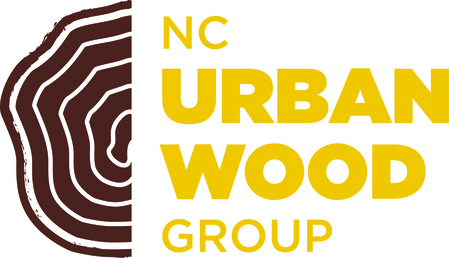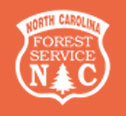NC Urban Wood Group
Celebrate your tree's second life!
Purpose of NCUWG
The North Carolina Urban Wood Group (NCUWG) wants to reverse the current management trend for timber waste on residential, commercial and municipal properties.
We are a group of wood utilization specialists, woodworkers, portable sawmill operators, and urban forest enthusiasts who want to develop a pathway for urban wood to enter the supply chain. This would let woodworkers generate an array of high-quality, usable goods with timber that otherwise would enter the landfill or be processed for low-quality products (firewood and mulch). Bowls, benches, tables, cabinets and flooring are just a sampling of the types of consumer goods woodworkers can create with urban wood.
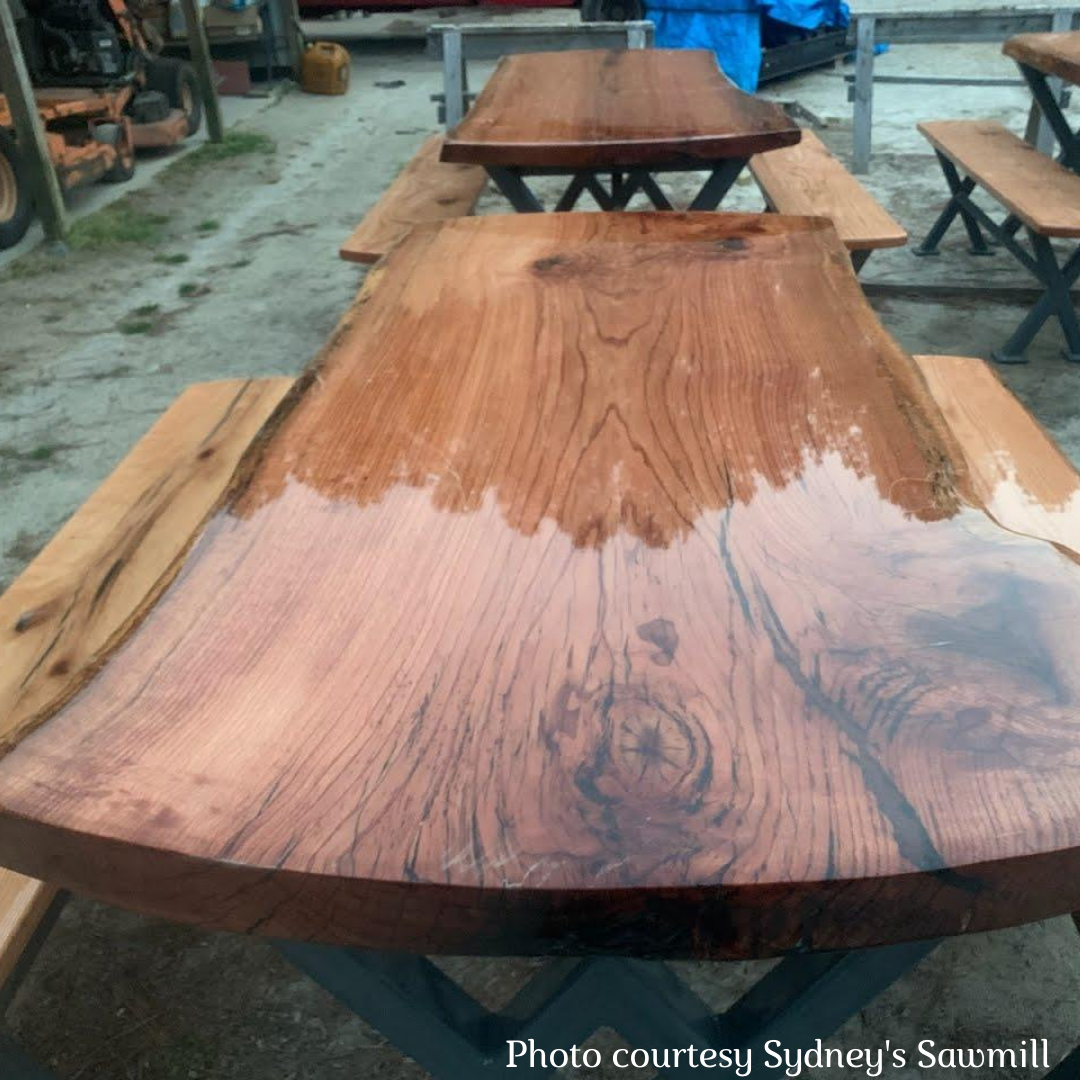
The communal problem
Residential property owners regularly hire arborists to remove trees that suffer extensive damage from storms, insect infestations, and mold/fungal diseases. Commercial and municipal property owners also seek tree removal for similar reasons, as well as for development and roadway improvements.
Where does that downed timber go? Sometimes the timber is cut into firewood or chipped to create landscape mulch. Other times the timber is left to rot in an abandoned pile on personal property. More times than not, however, the fallen timber winds up at a landfill, as does wood from demolished buildings. Such an end result for “wood waste” yields at least three unwanted consequences for our environment and communities.
- It takes at least 13 years for wood to decompose. That equates to an inordinate amount of wood piling up in our landfills through time.
- Once a tree is processed for firewood, mulch or landfill disposal, carbon enters the atmosphere and binds with oxygen. This generates an increase in Earth’s atmospheric carbon dioxide level, whether or not it is burned.
- Quality timber exits the supply chain for wood-based products. This requires woodworkers to rely on mostly commercially produced lumber to fulfill their business orders.
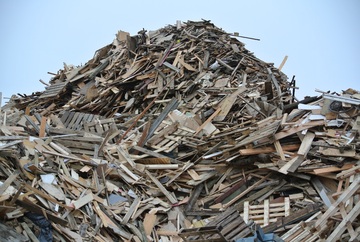
If landfills do not have enough space to accept urban wood, in addition to food, packing and other home/office waste, where will it go?
Much of the timber found on urban and rural properties, however, is a usable resource. Thus, communities and homeowners pay large disposal fees for materials that could have been converted into a marketable product. According to the U.S. Forest Service, timber harvested on residential, commercial and municipal properties throughout the United States could generate as much as 3.8 billion board feet of wood.
To put that value into perspective, general contractors need 6,300 board feet of wood to create a 1,000-square foot house. Therefore, the timber removed from urban and rural communities could, in theory, create 476,190 homes. Moreover, when trees retain their solid wood form after cutting, they continue to store carbon in their cells, even after being converted into a marketable product. Hence, when communities salvage urban wood, they can reduce how much carbon dioxide they release into the atmosphere.
The good news is that increasingly more people, organizations and businesses are recognizing that a different communal approach is needed for urban wood management. And all it took was the arrival of an invasive pest from Asia.
In 2002, residents near Detroit, Michigan, discovered the presence of emerald ash borer among their ash trees. This small, metallic green beetle most likely hitchhiked from Asia to the United States within wood packing materials. It took little time for the insect to establish itself among ash trees native to Michigan and, eventually, states to the south and east, including North Carolina.
Emerald ash borer, photo courtesy of Tom Brumbelow/USFWS
Today the nation has lost tens of millions of ash trees. Why? When the larvae of emerald ash borers exit their eggs, they tunnel their way into inner, life-sustaining tissues of trees and fatally disrupt the flow of water and nutrients. The demise of so many ash trees led a handful of people in Michigan (and elsewhere) to establish a system for transporting the infested trees to multiple sawmills, instead of the local dump. Since the early 2000s, other tree health crises have emerged in North Carolina, including sudden oak death (a fungal disease among oak trees) and southern pine bettle infestations (a native insect that damages pine species in multiple ways).
The death of millions of North Carolina trees sparked a public need for more sustainable recycling options; options that capture the social and economic values urban wood can offer local communities. Despite this mounting interest for inserting urban wood into the market system, municipal forestry departments and independent tree service companies still struggle to finance the high costs of transporting and processing urban wood.
A creative solution
What if there was another way to manage the damaged, diseased and unwanted trees in our urban and rural communities?
Members of the North Carolina Urban Wood Group know it is necessary to think outside the box when salvaging wood from urban and rural communities. To create a system through which urban wood is viewed as a sustainable resource, capable of generating high-quality products at the local level, NCUWG must tackle the following persistent challenges:
- Connect homeowners and municipalities with urban wood service providers. The harvesting of timber in urban and rural communities depends on the time schedule of indivdiual property owners. Property owners need to know who to contact when they want their downed trees to enter the workshop of woodworkers.
- Identify long-term storage space for urban wood. Often property owners must store the logs of harvested trees on their site until a buyer is identified. Who can provide warehouse space for slabs or urban wood? Who can transport the rough cut lumber to the storage facility? Who are the woodworkers that need access to the lumber?
- Portable sawmill operators can only drive a limited distance. Portable sawmills are not meant to travel many hours on the road among multiple sites. How can tree service companies integrate urban wood salvaging into their business? Is there a way for tree service companies to join forces with portable sawmill operators?
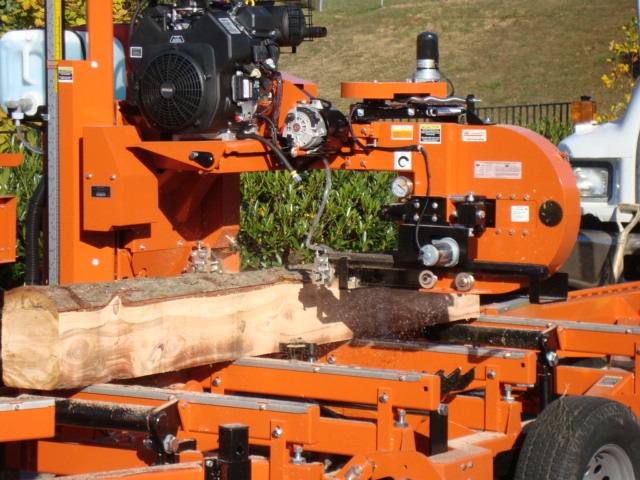
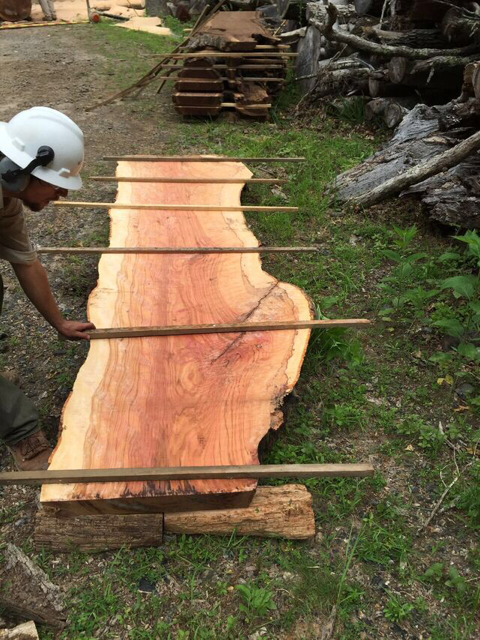
Over the last few years, NCUWG has organized presentations, webinars, and workshops addressing the utilization of urban wood, including the challenges listed above. Today we have an Advisory Committee, tasked with developing strategies to help local communities insert urban wood into the supply chain. The members of the Advisory Committee represent the following organizations, agencies and businesses:
- North Carolina Urban Forest Council
- Acres of Timber
- Carolina Urban Lumber
- Fireside Farm and Sawmill
- McIntyre Farms, LLC
- Wild Edge Woodcraft
- North Carolina State University / Cooperative Extension
- North Carolina Forest Service
The North Carolina Urban Wood Group is also a member of the Urban Wood Network, a national association of urban wood advocates across the United States. As a member of this national network, we have access to the knowledge, skills and experiences of other agencies, organizations, businesses and individuals passionate about treating urban and rural trees as a sustainable resource. Indeed, when urban trees obtain their highest and best use, we generate environmental and socio-economic benefits for people across our state and beyond.
Become part of the solution
Want to join the movement? Contact NCUWG today! You will receive our bi-monthly newsletter (NC Urban Wood Chip) and event announcements. You'll also learn howyou can help NCUWG advocate for a holistic use of all trees in your community.
Check out the resources listed below to expand your knowledge of the urban wood movement.
And remember – trees first, next wood.
Directory of NC Wood Processors
Welcome to the Yellow Pages of the North Carolina Urban Wood Group!
Our directory of urban wood processors across the state is based on research conducted by the North Carolina Forest Service. If your business is not listed, please email NCUWG so we can add you to the directory.
DISCLAIMER: Please note that neither NCUWG nor NC Forest Service endorses any of the businesses listed in the directory. We simply wanted to make it easy for residents across the state to find urban wood specialists, whether it is for cutting, milling or lumber purchasing needs.
Establish an Urban Wood Program
Do you want to establish an process an urban wood management process for your community? One that benefits your local economy while reducing your community's environmental impact? Download the North Carolina Forest Service's brocuhure entitled, Establishing an Urban Wood Use Program: An Introduction. This six page document will equip you with the following information:
- Description and purpose of urban wood use programs
- Economic and environmental benefits of urban wood utilization
- Steps and resources needed to establish a program
- Market opportunities for urban wood materials
Also check out guidance from the Wisconsin Department of Natural Resources. It features information about how urban trees should be cut to ensure a sawmiller can process the wood for urban lumber. You'll find the NC Cooperative Extension's urban wood waste management document beneficial, too.
To cheer you on as you pursue your lofty endeavor, visit the following links to learn about national success stories in the urban wood movement. There is no one way to divert urban wood from the landfill and into the hands of artisans. May these following examples help you think outside the box.
- Baltimore Wood Project (Maryland)
- Utililizing Municipal Trees - Ideas from Across the Country (May 2002)
- Video: Circular UrbanWood Triconomy Process (Ann Arbor, Michigan)
Do you have a success story to share? Email NCUWG today!
NCUWG Education Event Recordings
Periodically, the North Carolina Urban Wood Group organizes free online seminars. These webinars help municipalities, non-profit organizations, woodworkers, tree care workers, and tree advocates learn how to establish an urban wood management program. We also use the webinars to explore the technology behind woodworking. More educational events are in development and will join the following list as they occur.
- Creating and Managing Collection Yards for Urban Wood (7 June 2023)
- Challenges and Success in Urban Wood Webinar (8 September 2022)
- First Steps for Municipal Urban Wood Programs Webinar (4 February 2021)
- Vaccum Kiln & Sawmill Demonstration Webinar (1 December 2020)
Online Resources
Need more insight about the urban wood movement? Explore the following websites and let them send you down the rabbit hole of curiousity and discovery.
- #ForestProud
- Purdue Extension: Urban versus Traditional Wood (characteristics, harvesting, milling, and grading)
- Urban Wood Economy
- Urban Wood Network
- USWR Certified Urban Wood
- Vibrant Cities Lab
- Virginia Urban Wood Group
- Woodpreneur
Also peruse our past issues of the quarterly NCUWG Bulletin. In contrast to today's NC Urban Wood Chip (subscribe at urbanwoodnc@gmail.,com), fthe Bulleting featured a lengthier, newsletter style.
- August 2021 Bulletin
- April 2021 Bulletin
- December 2020 Bulletin
- July 2020 Bulletin
- Apirl 2020 Bulletin


